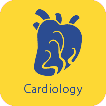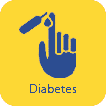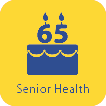I am training for a century ride, Do you have any advice?
A friend has convinced me to train for a century ride. I’m not in terrible shape but am a little overweight and the furthest I have ever ridden is about 30 miles. Do you have any advice?
Starting a training program with a goal in mind, such as a century ride (a 100-mile bicycle ride), can be a great way to maintain motivation and commit to a workout schedule. It is best to start training well in advance of the event, at least three months or more if you have some weight to lose. Start slowly, gradually building your body’s ability to recover from increasingly difficult workouts. If you haven’t been exercising for a while or have any chronic health conditions, it would be wise to consult with your primary care physician before starting a training program.
Create a workout plan that includes interval training and cross training. Once or twice a week, incorporate something other than bicycling to your routine like swimming, strength training, hiking or yoga. Also include one day of rest or very light exercise per week to allow your body to recover from your high-intensity rides.
There are lots of workout suggestions online to help you prepare for a century ride. Do some research and combine elements from different workouts that fit your fitness level and schedule. Keep your workout plan on a calendar to help you stick with the schedule. If your schedules match up, train with a friend or group to build motivation and gain more knowledge and ideas from others about your sport.
Good nutrition is just as important as fitness training. You can train better when your body is properly fueled. Eat lots of whole grains, fruits, vegetables and legumes and smaller amounts of lean meat, fish, poultry or dairy products. Drink plenty of fluids before workouts and enough during exercise to replace fluid lost through sweat. Stay hydrated to reduce post-workout muscle pain and headaches.
When you ride 100 miles, you will need to consume some calories along the way. To prepare, learn how your body responds to food during shorter workouts by trying different types of food like raisins or energy bars or gels. You will need to figure out how much, how often and what kinds of food work for you without giving you a stomach ache or nausea.
Make sure you have good, properly fitting equipment – the same equipment you train with should be the same equipment you use for the century ride so that you don’t have any surprise discomforts or malfunctions. Wear a helmet that is in good condition, with no previous impacts that may have caused damage and compromised its ability to protect your head. Make sure the helmet fits properly and will stay in place should you suffer a fall.
Your bike should be the right size with seat and handlebars adjusted to allow proper position and movement. If your bike is not fitted properly you may find soreness, particularly in your knees, feet, back or neck. If you get saddle sore, try out different seats until you find the one that fits you best and try different thicknesses of padded bike shorts. Use hard-soled biking shoes that will evenly distribute energy to the pedals and limit your foot from flexing, which will make you more efficient and help prevent sore feet. Padded gloves will reduce blisters and may prevent numbness from developing in your fingers as you grip the handlebars. Also adjust your position throughout your ride – stand up in your pedals to stretch your back and legs, move your hands to different angles, and bend your elbows.
With the right equipment, properly fitted just for you, consistent training and good nutrition leading up to and on the big day, you should find your century ride to be a great experience and quite an accomplishment.










